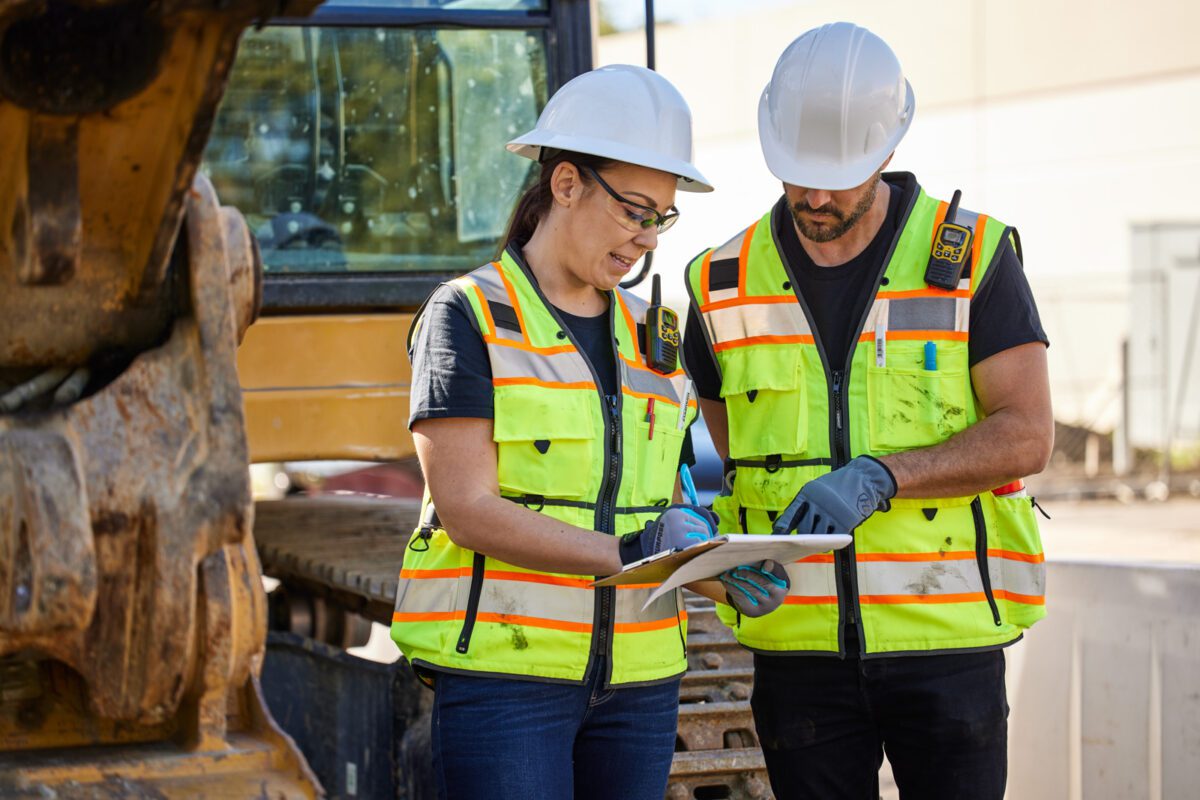Visibility Matters: A Practical Guide to ANSI/ISEA 107-2020 Safety Apparel Classifications
The Science Behind High-Visibility
Before diving into the classifications, it’s useful to understand how high-visibility apparel actually works:- Fluorescent Materials: These create strong color contrast by converting invisible ultraviolet light into visible light. Wearers appear to “glow” against various backgrounds, which is especially helpful at dawn, dusk, or under overcast skies.
- Retroreflective Materials: Composed of countless tiny glass beads or prismatic elements, these materials reflect light directly back to its source (e.g., vehicle headlights), making workers visible in low-light or nighttime conditions—when fluorescent colors are less effective.
ANSI/ISEA 107-2020: Breaking Down the Standard
The American National Standards Institute (ANSI) and International Safety Equipment Association (ISEA) developed the 107-2020 standard to categorize high-visibility safety apparel into three performance classes. Each class specifies different requirements for background and retroreflective materials, as well as recommended usage scenarios.Class 1: Basic Protection in Controlled Environments
When to Use Class 1:- Work areas with physical separation from traffic
- Vehicle speeds under 25 mph
- Primary hazards located nearby rather than from high-speed vehicles
- Good ambient lighting
- Minimum 217 sq. inches of fluorescent background material
- Minimum 155 sq. inches of retroreflective material
- Retroreflective bands at least 1 inch wide
- Warehouse operations with limited vehicle traffic
- Daylight parking lot attendants
- Sidewalk maintenance away from roadways
- Delivery personnel in controlled environments
Class 2: Enhanced Visibility in Moderate-Risk Settings
When to Use Class 2:- Work near traffic traveling between 25-50 mph
- Moderate weather conditions
- Complex backgrounds where workers could blend in
- Tasks that require attention to both surroundings and detailed work
- Minimum 775 sq. inches of fluorescent background material
- Minimum 201 sq. inches of retroreflective material
- Retroreflective bands at least 1.375 inches wide
- 360-degree visibility with bands placed to outline the human form
- Utility work on secondary roads
- School crossing guards
- Parking and toll booth attendants
- Survey crews in moderate-traffic areas
- Waste collection in residential neighborhoods
Class 3: Maximum Visibility in High-Risk Conditions
When to Use Class 3:- Work near traffic moving faster than 50 mph
- Complex visual backgrounds
- Adverse weather conditions (fog, rain, or snow)
- Night work or low-light tasks
- Full range of motion required for arms and legs
- Minimum 1,240 sq. inches of fluorescent background material
- Minimum 310 sq. inches of retroreflective material
- Retroreflective bands at least 1.97 inches wide
- Mandatory arm and leg visibility
- 360-degree visibility with strategically placed bands
- Highway construction crews
- Emergency responders at roadside incidents
- Tow truck operators on interstates
- Flaggers directing traffic in construction zones
- Railway maintenance workers
- Utility crews during nighttime repairs
Beyond Classifications: Additional Considerations
Type Designations
ANSI/ISEA 107-2020 also includes type designations that further refine usage:- Type O (Off-Road): For workers not exposed to roadway traffic or temporary traffic zones
- Type R (Roadway): Standard high-visibility apparel for workers in or near roadway traffic
- Type P (Public Safety): Specialized apparel for emergency and incident responders, often featuring breakaway designs and badge panels
Supplemental Class E Garments
Class E garments (such as pants, shorts, or gaiters) do not meet class requirements on their own but can be combined with Class 2 apparel to achieve Class 3. This modular approach allows workers to adapt to changing conditions.Fabric Performance Factors
When selecting high-visibility apparel, also consider:- Durability: Fluorescent dyes can fade with UV exposure and washing; higher-quality garments retain color longer.
- Comfort: Breathable fabrics, ventilation panels, and lightweight materials encourage consistent use.
- Weather Adaptability: Seasonal variations might call for cooling vests in hot weather or insulated parkas in winter.
- Task Compatibility: Features like pockets, tool loops, or badge holders should support job requirements.
Choosing the Right Gear: A Simple Decision Framework
- Assess Vehicle Speeds: Identify the maximum speeds workers will encounter.
- Evaluate Proximity: Determine how close workers will be to moving vehicles.
- Analyze Visibility Conditions: Consider lighting, weather patterns, and visual distractions.
- Consider Task Complexity: Determine whether workers must split their focus between tasks and surroundings.
- Review Past Incidents: Evaluate near-misses or accidents where visibility may have been a factor.
- Consult Applicable Regulations: Follow any industry-specific guidelines that mandate certain apparel classes.
Maintenance and Replacement Guidelines
High-visibility apparel can only protect workers if it’s in good condition. Make sure to:- Replace garments showing fading, tears, or stains that can’t be removed.
- Follow the manufacturer’s washing instructions to preserve fluorescent and retroreflective properties.
- Inspect garments regularly to verify ongoing compliance with visibility requirements.
- Consider setting an upper limit on wash cycles (often 25–50) for automatic replacement.
Conclusion: Visibility as a Key Part of Safety Culture
Selecting the right high-visibility apparel goes beyond meeting regulatory requirements—it reflects a genuine commitment to worker safety. By understanding how visibility materials function, recognizing the distinctions among the classes, and evaluating your work environment’s specific needs, you can make choices that truly safeguard employees. The cost difference between basic and premium garments is small when weighed against the potential consequences of inadequate visibility. As safety professionals often note: it’s not just about being seen—it’s about being seen in time.Disclaimer: This article is for informational purposes only. Always refer to the latest guidelines from ANSI/ISEA, OSHA, and local regulations to ensure full compliance and worker safety.
Upgrade your teams Safety Vests with Custom Text, Logos, or Graphics! Call us at 800-429-9030.

